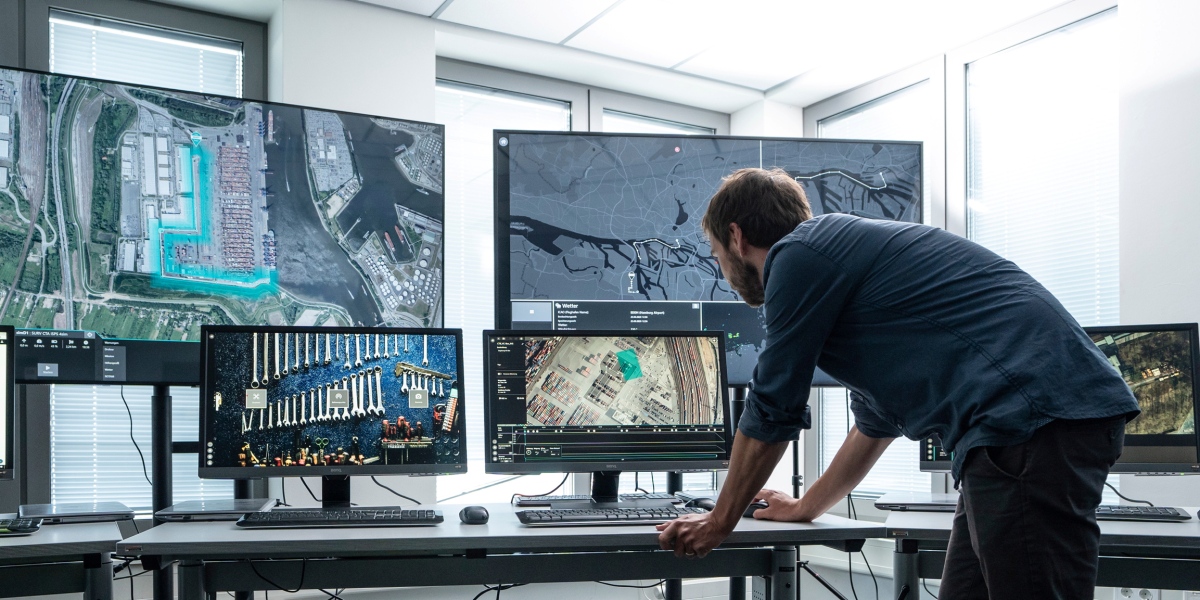
Hamburg port to extend use of diverse autonomous drones
 Hamburg port to extend use of diverse autonomous dronesOperators of Hamburg’s port partner with UAV services company HHLA Sky to operate a control platform for increased use of autonomous drones
Hamburg port to extend use of diverse autonomous dronesOperators of Hamburg’s port partner with UAV services company HHLA Sky to operate a control platform for increased use of autonomous dronesOperators of Hamburg’s port last year took the lead among major European transport and logistics hubs working to integrate autonomous drones and robotic vehicles into their daily activities. Now thye are seeking to extend that through a new partnership with German UAV services company HHLA Sky – a move expected to further expand use of automated aerial, water, and land vehicles across the vast site.
The deal between the Hamburg Port Authority (HPA) and HHLA Sky was sealed this month, and aims to ratchet up the enormous facility’s pace of incorporating autonomous drones as part of its everyday operational environment. HPA has said the full integration of HHLA Sky’s navigation, traffic management, and digital logistics flow and monitoring services will accelerate its effort to transform the port – Europe’s largest in terms of volume – into an innovative and intelligent transport hub through the effective use of automated craft.
That is central to HPA’s objective of creating a U-Space model that rivals will have to try to match. Central to the European Union Aviation Safety Agency’s (EASA) concept for managing increasing drone use by all kinds of government, business, and service providers, U-Spaces will frame and orchestrate UAV and autonomous robotic operations within wider environments of vehicle and human activity. The EASA has given EU members until the start of next year to begin implementing future U-Space functions.
HPA easily beat that deadline by beginning its project last July. Creation and testing of the port’s U-Space was underwritten by a $1.2 million grant from Germany’s Federal Ministry of Transport and Digital Infrastructure, which will draw off that experience to support establishment of similar drone airspaces, navigation systems, and infrastructure around the country.
HPA eagerly accepted the challenge of becoming the national – and possibly global – leader in U-Space development and operation. Now it says it wants to extend its lead with HHLA Sky by exploring new logistical, traffic, and task performance capabilities through increased deployment of autonomous drones around the port
“In the event of storm surges, accidents, or other unforeseeable disruptions, flying, floating or self-driving robots can be on-site considerably faster and provide high-resolution videos and pictures for an exact overview of the situation,” says HPA executive board chair Jens Meier, by way of example. “The time saved can be decisive in an emergency. Furthermore, they make the maintenance and expansion of the port infrastructure significantly more efficient – for example, in the case of facilities that are difficult, time-consuming, or dangerous to reach.”
Under their new partnership, HPA will entrust monitoring, coordination, and management of all autonomous drone and robotic vehicles operating in the port to HHLA Sky’s over-arching control platform.
“Our solution will display and control all associated processes in a safe and understandable manner,” says Matthias Gronstedt, managing director of HHLA Sky. “Furthermore, the HPA is able to collect very different kinds of data using mobile teleoperated sensors. Analyzing it helps us use resources optimally.”
https://www.civilengineering.ai/hamburg-port-to-extend-use-of-diverse-autonomous-drones/


 Mayor of London announces plans to tackle poor air quality and emissionsA new report commissioned by the Mayor of London outlines the scale of the action required to move London towards a greener future.
Mayor of London announces plans to tackle poor air quality and emissionsA new report commissioned by the Mayor of London outlines the scale of the action required to move London towards a greener future.
 Uber acquires Australian company Car Next DoorUber continues to offer Australians an alternative to private car ownership by acquiring peer-to-peer car-sharing platform Car Next Door.
Uber acquires Australian company Car Next DoorUber continues to offer Australians an alternative to private car ownership by acquiring peer-to-peer car-sharing platform Car Next Door.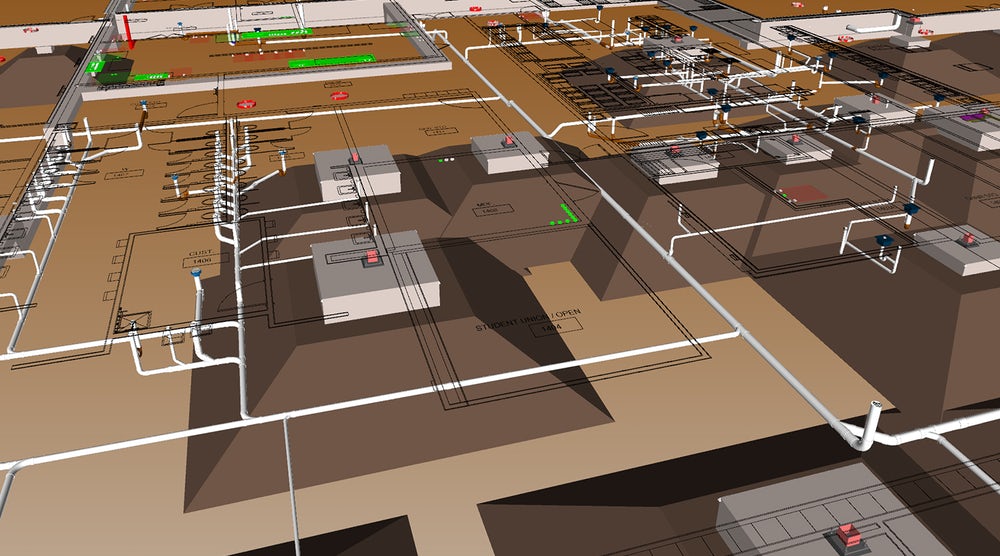
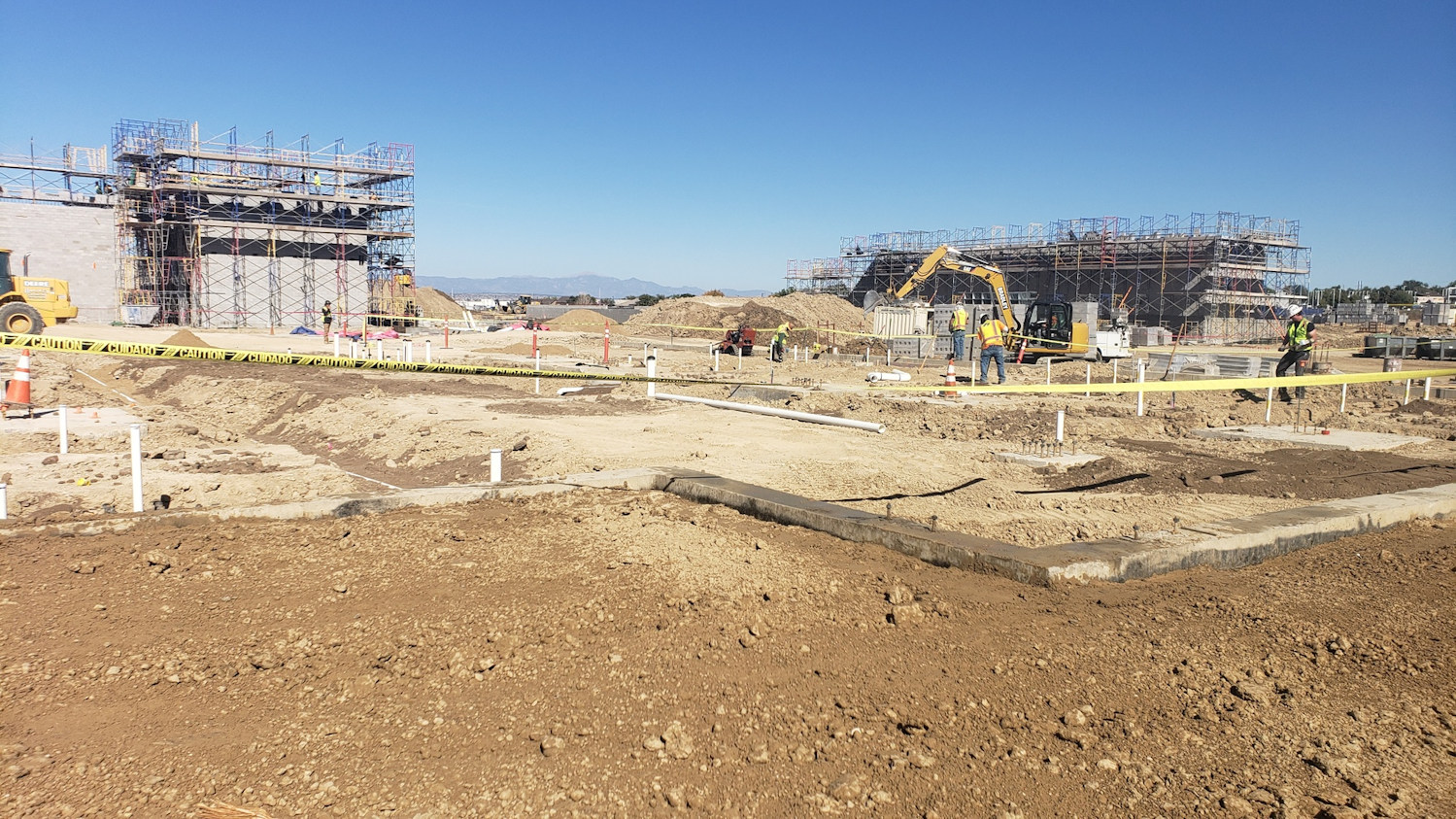 Centennial High School Construction Site | Fall 2021: Early stages of building at the site in Pueblo, Colorado. White pipe is PVC for the school’s underground sanitary system. In the background, block walls for different sections of the school are being erected. The two-story, 185,000-square-foot building broke ground in the spring of 2021 and is slated for completion in 2023.
Centennial High School Construction Site | Fall 2021: Early stages of building at the site in Pueblo, Colorado. White pipe is PVC for the school’s underground sanitary system. In the background, block walls for different sections of the school are being erected. The two-story, 185,000-square-foot building broke ground in the spring of 2021 and is slated for completion in 2023.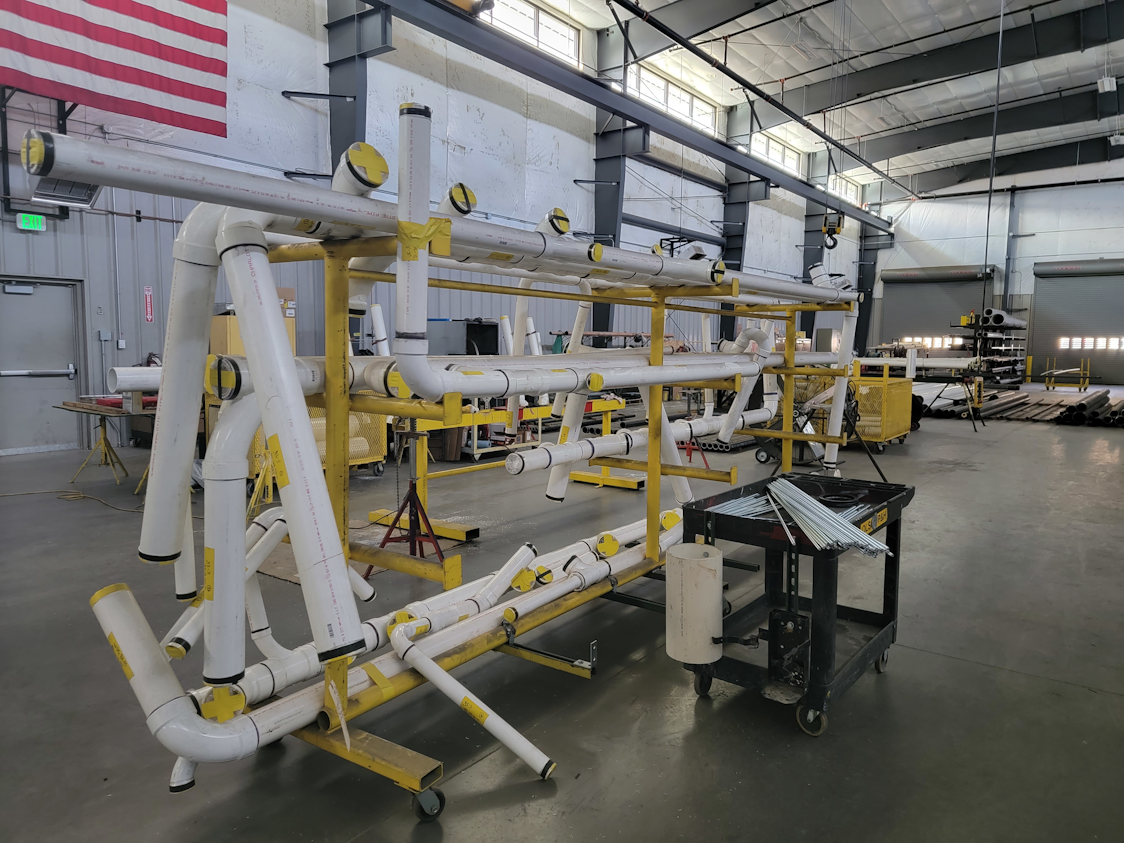 Olson Plumbing & Heating fabrication shop in Colorado Springs: “We felt Centennial would be a really good project for Uponor, given our own emphasis on prefabrication,” says project manager Lana Marsh. Using BIM, Olson can prefabricate 95 percent of the PVC piping installed underground, notes Olson BIM/CAD manager Chris Becker. “Prefabrication makes field installation go substantially faster, a critical necessity for meeting production schedules.” Shown here are 20-foot lengths of PVC, fitted with prefabricated connections, ready for shipment to the job site.
Olson Plumbing & Heating fabrication shop in Colorado Springs: “We felt Centennial would be a really good project for Uponor, given our own emphasis on prefabrication,” says project manager Lana Marsh. Using BIM, Olson can prefabricate 95 percent of the PVC piping installed underground, notes Olson BIM/CAD manager Chris Becker. “Prefabrication makes field installation go substantially faster, a critical necessity for meeting production schedules.” Shown here are 20-foot lengths of PVC, fitted with prefabricated connections, ready for shipment to the job site.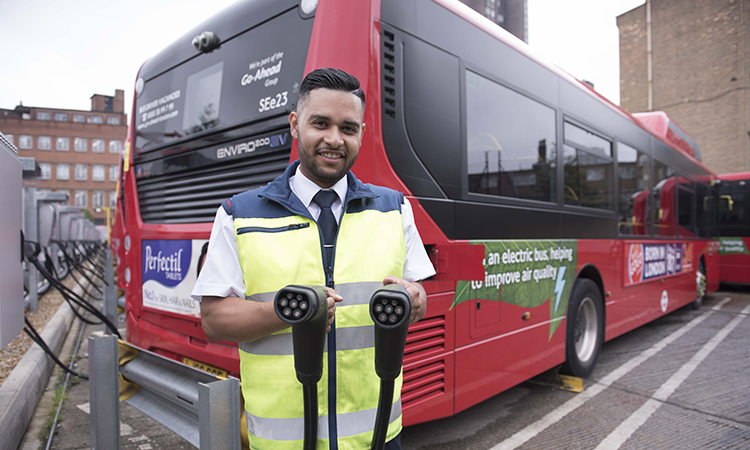 Go-Ahead Group awarded for carbon cutting initiativesFor the second year in a row, the Carbon Disclosure Project has awarded Go-Ahead with an ‘A minus’ rating for reducing carbon emissions.
Go-Ahead Group awarded for carbon cutting initiativesFor the second year in a row, the Carbon Disclosure Project has awarded Go-Ahead with an ‘A minus’ rating for reducing carbon emissions.
 Summit Visual
Summit Visual
 Atlantia to buy Yunex Traffic from Siemens for $1 billionFRANKFURT (Reuters) - Italian infrastructure group Atlantia has agreed to buy Siemens’ Yunex Traffic division for 950 million euros ($1.1 billion) to expand its cutting-edge transport services.
Atlantia to buy Yunex Traffic from Siemens for $1 billionFRANKFURT (Reuters) - Italian infrastructure group Atlantia has agreed to buy Siemens’ Yunex Traffic division for 950 million euros ($1.1 billion) to expand its cutting-edge transport services. How engineers can harness more benefits from infrastructure project data | New Civil EngineerThere is scope to make construction projects more efficient and “greener”, as well as buildings safer, by harnessing the power of data.
How engineers can harness more benefits from infrastructure project data | New Civil EngineerThere is scope to make construction projects more efficient and “greener”, as well as buildings safer, by harnessing the power of data.
 Partnership Taps AIoT for Intelligent Wi-Fi SensingOrigin Wireless and nami.ai’s product will use Wi-Fi radio waves as intelligent sensors in smart home devices
Partnership Taps AIoT for Intelligent Wi-Fi SensingOrigin Wireless and nami.ai’s product will use Wi-Fi radio waves as intelligent sensors in smart home devices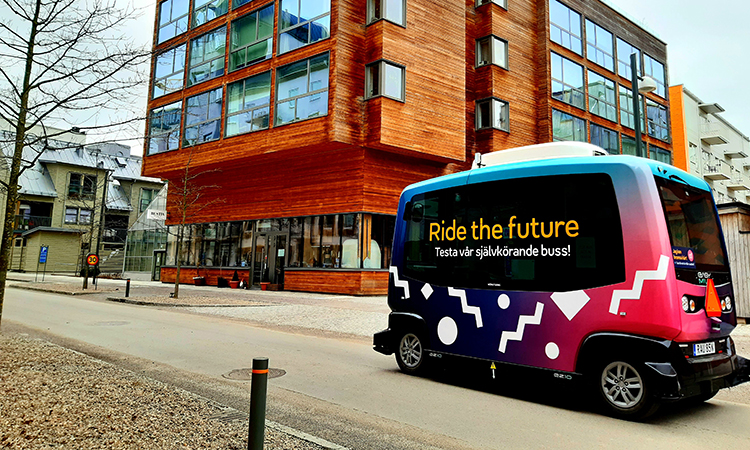 How can autonomous vehicles contribute to sustainable mobility planning?SHOW is the flagship pan-European initiative that is piloting autonomous vehicles (AVs) and working to define a tipping point in AV development timelines to make them a reality of tomorrow. Building upon the 13 relevant use cases identified in the former SPACE project, it is focused on concretising the formula for the feasible and efficient integration of AVs in the public transport network, while quantifying their contribution to the objectives of sustainable mobility planning.
How can autonomous vehicles contribute to sustainable mobility planning?SHOW is the flagship pan-European initiative that is piloting autonomous vehicles (AVs) and working to define a tipping point in AV development timelines to make them a reality of tomorrow. Building upon the 13 relevant use cases identified in the former SPACE project, it is focused on concretising the formula for the feasible and efficient integration of AVs in the public transport network, while quantifying their contribution to the objectives of sustainable mobility planning. Concrete-AI draws investors, recruits Master Builders veteran – Concrete ProductsMix design software developer Concrete-AI has raised $2 million in a seed financing round with participation by the Grantham Foundation for the Protection of the Environment, a prominent family office, and other marquee investors. The investment will accelerate rollout of the firm’s pioneering data science platform that uses artificial intelligence (AI) and machine learning (ML) to optimize supply chains and materials selection, and bring new efficiencies to concrete mixture design, proportioning and production. The platform delivers unparalleled reductions in the cost and embodied carbon of ready mixed and precast concrete without changing production methods or materials.
Concrete-AI draws investors, recruits Master Builders veteran – Concrete ProductsMix design software developer Concrete-AI has raised $2 million in a seed financing round with participation by the Grantham Foundation for the Protection of the Environment, a prominent family office, and other marquee investors. The investment will accelerate rollout of the firm’s pioneering data science platform that uses artificial intelligence (AI) and machine learning (ML) to optimize supply chains and materials selection, and bring new efficiencies to concrete mixture design, proportioning and production. The platform delivers unparalleled reductions in the cost and embodied carbon of ready mixed and precast concrete without changing production methods or materials.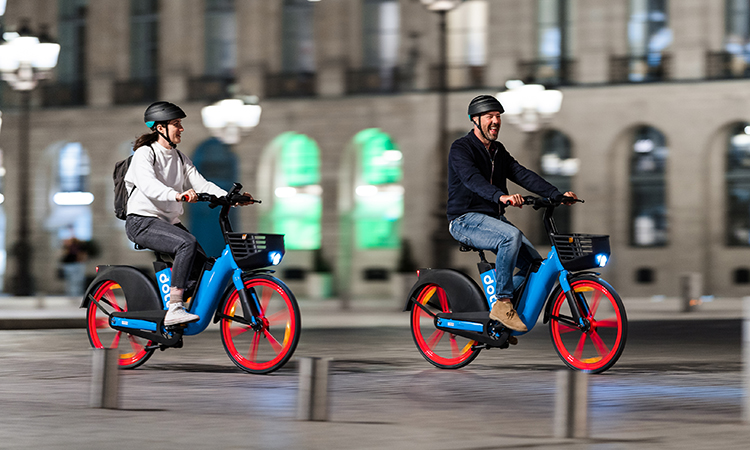 Dott to introduce its e-bike sharing service in Marseille, FranceFrom 30 January 2022, 1,000 of Dott’s shared e-bikes will be available for use in Marseille, offering users an environmentally friendly way of moving around the city.
Dott to introduce its e-bike sharing service in Marseille, FranceFrom 30 January 2022, 1,000 of Dott’s shared e-bikes will be available for use in Marseille, offering users an environmentally friendly way of moving around the city.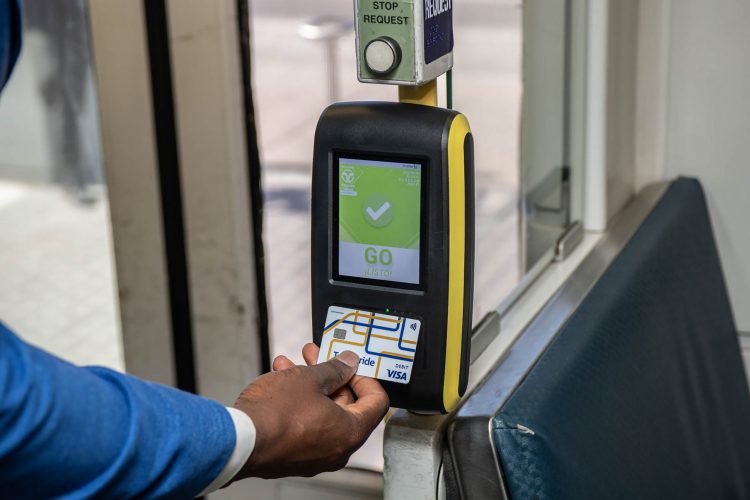 California taps into the future of fare collectionGillian Gillett, Program Manager of California Integrated Mobility at the California Department of Transportation, outlines the agency’s vision for a connected transportation network in California, which will offer riders contactless payments and better journey information.
California taps into the future of fare collectionGillian Gillett, Program Manager of California Integrated Mobility at the California Department of Transportation, outlines the agency’s vision for a connected transportation network in California, which will offer riders contactless payments and better journey information.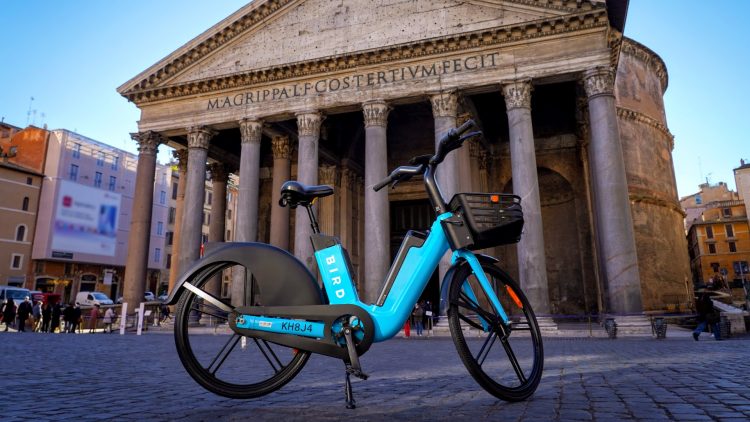 Bird launches multimodal fleet in RomeRiders in Rome now have access to hundreds of Bird e-scooters and e-bikes, as well as Zig Zag e-mopeds, following the launch of Bird’s multimodal fleet in the Italian capital.
Bird launches multimodal fleet in RomeRiders in Rome now have access to hundreds of Bird e-scooters and e-bikes, as well as Zig Zag e-mopeds, following the launch of Bird’s multimodal fleet in the Italian capital. Powerful sensors on planes detect crop nitrogen with high accuracySynthetic nitrogen fertilizers transformed agriculture as we know it during the Green Revolution, catapulting crop yields and food security to new heights. Yet, despite improvements in crop nitrogen use efficiency, fears of underperformance spur fertilizer overapplication to this day. Excess nitrogen then ends up in waterways, including groundwater, and in the atmosphere in the form of potent greenhouse gasses.
Powerful sensors on planes detect crop nitrogen with high accuracySynthetic nitrogen fertilizers transformed agriculture as we know it during the Green Revolution, catapulting crop yields and food security to new heights. Yet, despite improvements in crop nitrogen use efficiency, fears of underperformance spur fertilizer overapplication to this day. Excess nitrogen then ends up in waterways, including groundwater, and in the atmosphere in the form of potent greenhouse gasses.
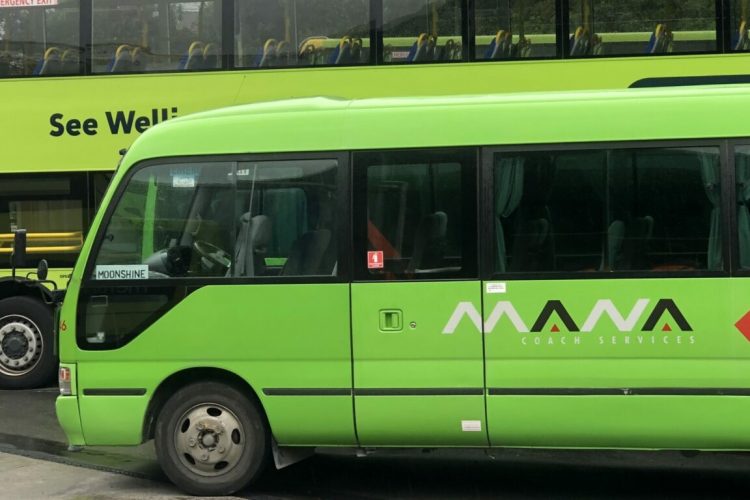
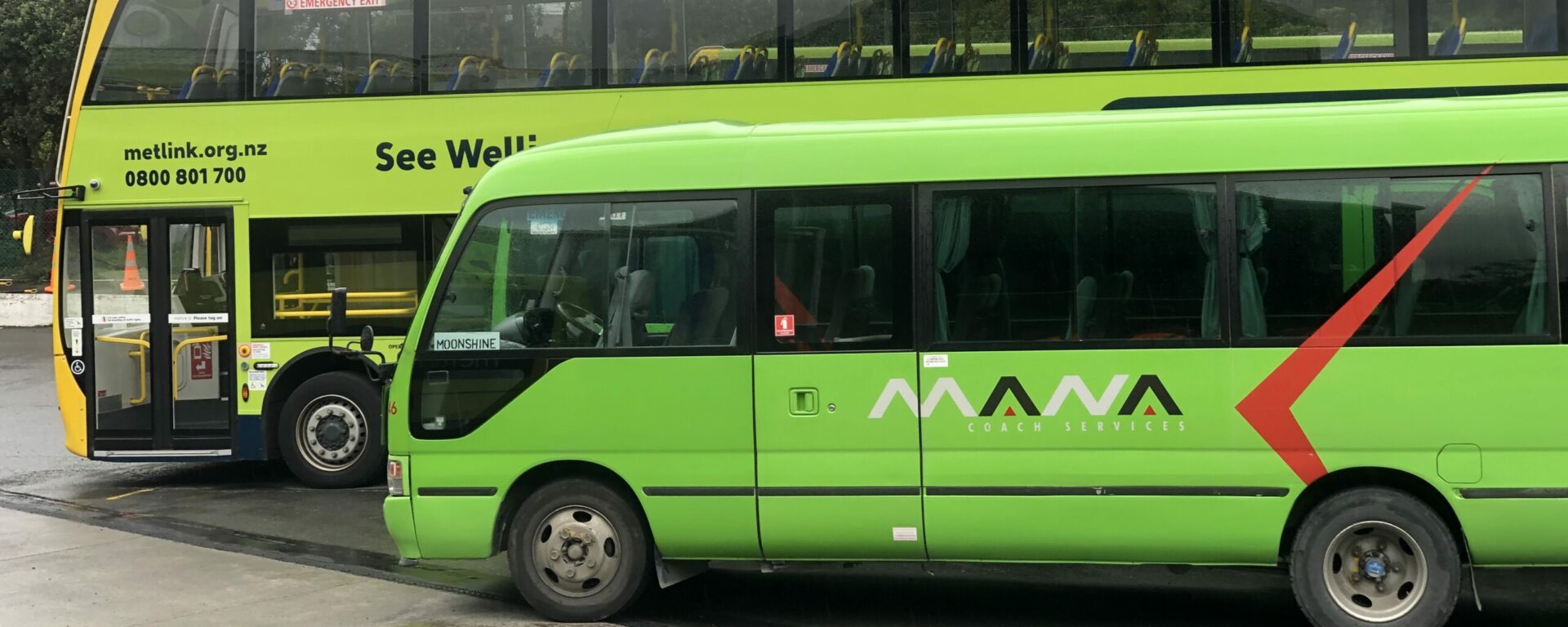 Transdev to begin operating new Wellington bus service in summer 2022Transdev subsidiary Mana Newlands has been awarded a six-year contract to operate a new bus service between Wellington Station and Wellington International Airport from July 2022.
Transdev to begin operating new Wellington bus service in summer 2022Transdev subsidiary Mana Newlands has been awarded a six-year contract to operate a new bus service between Wellington Station and Wellington International Airport from July 2022. Contactless cash: Ensuring that everyone is along for the rideKatherine Conrad, Director of Client Services at NEORide, discusses the introduction of cash payments for mobile tickets across the EZfare payment system and why this is key to ensuring that the needs of both transit and its passengers are met.
Contactless cash: Ensuring that everyone is along for the rideKatherine Conrad, Director of Client Services at NEORide, discusses the introduction of cash payments for mobile tickets across the EZfare payment system and why this is key to ensuring that the needs of both transit and its passengers are met.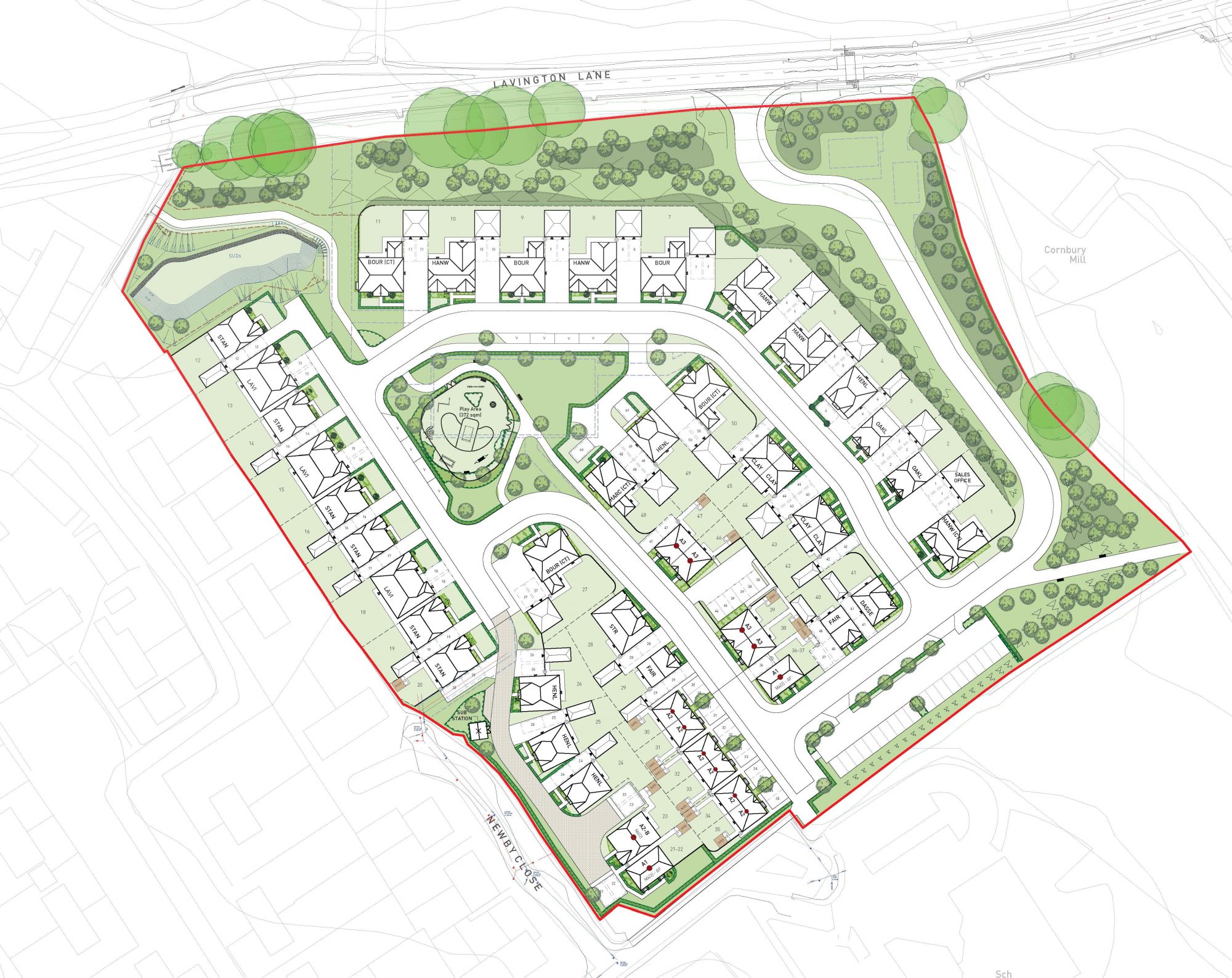 Hayfield acquires site to deliver £21m green developmentHayfield has acquired a prime eight-acre site to deliver a £21m green development, featuring 50 eco-efficient luxury homes in Wiltshire, West Lavington
Hayfield acquires site to deliver £21m green developmentHayfield has acquired a prime eight-acre site to deliver a £21m green development, featuring 50 eco-efficient luxury homes in Wiltshire, West Lavington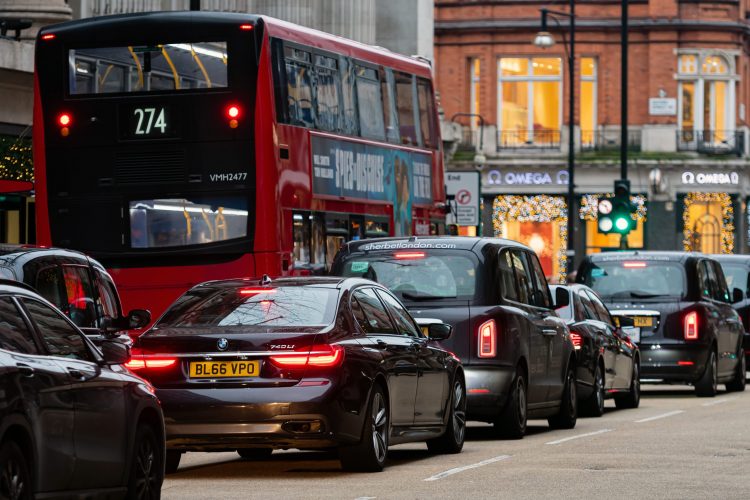 Mayor of London reveals cost of congestion as car use remains highDespite efforts to encourage the use of active travel and public transport, the Mayor of London has revealed that congestion in the capital is costing the economy £5.1 billion a year.
Mayor of London reveals cost of congestion as car use remains highDespite efforts to encourage the use of active travel and public transport, the Mayor of London has revealed that congestion in the capital is costing the economy £5.1 billion a year.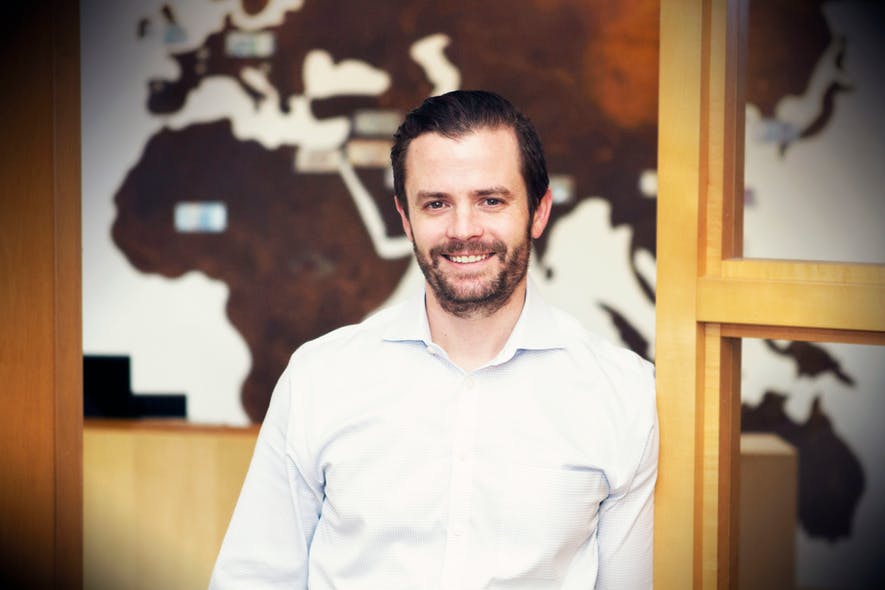
 New tiny sensor makes the invisible visibleA TU/e research group has developed a new near-infrared sensor that is easy to make, comparable in size to sensors in smartphones, and ready for immediate use in industrial process monitoring and agriculture. This breakthrough has just been published in Nature Communications, with co-first author Kaylee Hakkel defending her Ph.D. thesis on January 14th.
New tiny sensor makes the invisible visibleA TU/e research group has developed a new near-infrared sensor that is easy to make, comparable in size to sensors in smartphones, and ready for immediate use in industrial process monitoring and agriculture. This breakthrough has just been published in Nature Communications, with co-first author Kaylee Hakkel defending her Ph.D. thesis on January 14th.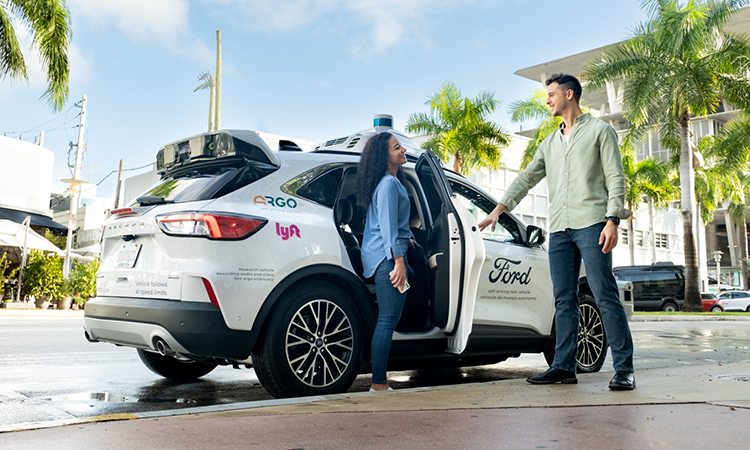 Lyft and partners launch autonomous ride-share service in MiamiAs part of an industry-first collaboration, Lyft and its partners have launched an autonomous ride-share service in the Floridian city of Miami, with the service set to expand to Austin later in 2022.
Lyft and partners launch autonomous ride-share service in MiamiAs part of an industry-first collaboration, Lyft and its partners have launched an autonomous ride-share service in the Floridian city of Miami, with the service set to expand to Austin later in 2022.
